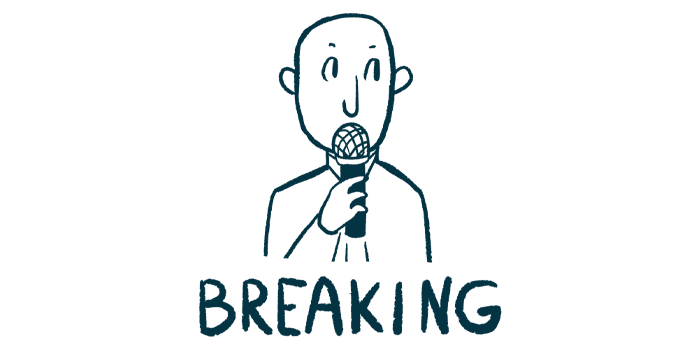FDA Rejects Filsuvez Gel for Treating Skin Wounds in JEB, DEB

The U.S. Food and Drug Administration (FDA) has rejected an application seeking approval of Filsuvez (Oleogel-S10) for treating skin wounds in people with junctional (JEB) and dystrophic epidermolysis bullosa (DEB).
In its complete response letter to Amryt Pharma, the therapy’s developer, the FDA stated that the company’s application cannot be approved in the present form. Particularly, the agency has asked for more evidence of Filsuvez’s effectiveness in treating EB. Amryt now intends to discuss the nature of the requested data with the FDA as it seeks to “address the Agency’s concerns,” the company said in a press release.
“We are extremely disappointed by this decision and we remain committed to our goal of bringing Oleogel-S10 to patients. EB is a devastating disease with no approved treatment options and the EB community is desperate for a therapy,” said Joe Wiley, Amryt’s co-founder and CEO.
“We are committed to working collaboratively with the FDA to identify the most expeditious pathway towards a potential approval for this important therapy,” Wiley added.
The decision comes about eight months after the regulatory agency agreed to review Amryt’s application under priority. That, in turn, occurred three months later than initially expected due to the agency’s need for more time to review additional data submitted by Amryt in support of its application.
A similar application is being reviewed in the European Union, with a recommendation by the Committee for Medicinal Products for Human Use (CMHP), an arm of the European Medicines Agency (EMA), expected by March. CHMP opinions are generally accepted by the European Commission, which makes the final decisions.
Notably, Filsuvez’s review process in the EU also suffered delays. One was associated with the need for Amryt to address a list of outstanding questions issued by the EMA, while the other was due to the agency’s decision to seek the opinions of independent EB experts and patients before issuing a recommendation.
The therapy received orphan drug, fast track, and rare pediatric disease designations in the U.S. and orphan drug status in Europe. These designations are meant to help accelerate the therapy’s clinical development and regulatory review.
Filsuvez is a gel applied to the skin that contains an extract from birch tree bark that is rich in a compound called betulin. Research suggests that betulin can promote wound healing by controlling inflammation and boosting the migration of keratinocytes, the main cell type of the outer layer of skin.
Originally developed by Birken AG, which was later acquired by Amryt, the gel was approved in Europe in 2016 under the brand name Episalvan for treating partial-thickness skin wounds due to burns or skin grafts.
Partial-thickness wounds, in which the skin is missing its top layers, also occur in people with EB, a group of rare skin disorders that make the skin extremely fragile and prone to blistering.
The FDA’s decision was based on top-line results from the Phase 3 EASE clinical trial (NCT03068780), which tested Filsuvez against a placebo gel in 156 children and 67 adults with either JEB, DEB, or Kindler syndrome — making it the largest in EB, according to Amryt.
JEB and DEB are more common forms of EB, while Kindler syndrome is a very rare form.
All trial participants had an EB-related wound between 10 and 50 square centimeters in size (about four by 20 square inches) for at least three weeks, but less than nine months. They were randomly assigned to treat their wounds with either Filsuvez or a placebo gel for three months.
Data showed that a significantly greater proportion of Filsuvez-treated patients exhibited complete closure of target wounds within 45 days relative to those on a placebo gel (41.3% vs. 28.9%) — meeting the trial’s main goal. This meant that Filsuvez increased the probability of target wound closure by 44%.
“The EASE study was the largest randomized clinical trial ever conducted in this disease and the first Phase 3 study to meet its primary endpoint [goal],” Wiley said.
Notably, this significant effect was found to be exclusive to the group of patients with recessive DEB, in whom Filsuvez treatment was associated with 72% higher chances of wound closure within 45 days.
Patients with dominant DEB or JEB showed no significant wound closure differences between Filsuvez and a placebo. Recessive DEB is usually more severe than dominant DEB.
Filsuvez-treated patients also were more likely to show wound closure within three months, and faster than those using the placebo gel, but these differences failed to reach statistical significance.
Participants reported less pain during dressing changes with Filsuvez than with a placebo gel; that difference was statistically significant on day 14, but only nearly significant at three months.
Greater reductions in total body wound burden, as measured with the EB Disease Activity and Scarring Index, and total area of EB partial-thickness wounds, also were reported by patients given Filsuvez, but again these differences were not significant.
The therapy was generally safe and well-tolerated, with adverse event rates similar to those in the placebo group. The most commonly reported adverse events included wound complications, fever, wound infection, itching, and low levels of red blood cells.
All patients who completed EASE’s three-month period entered the study’s extension phase, in which all are receiving Filsuvez for two years to collect long-term safety data.







